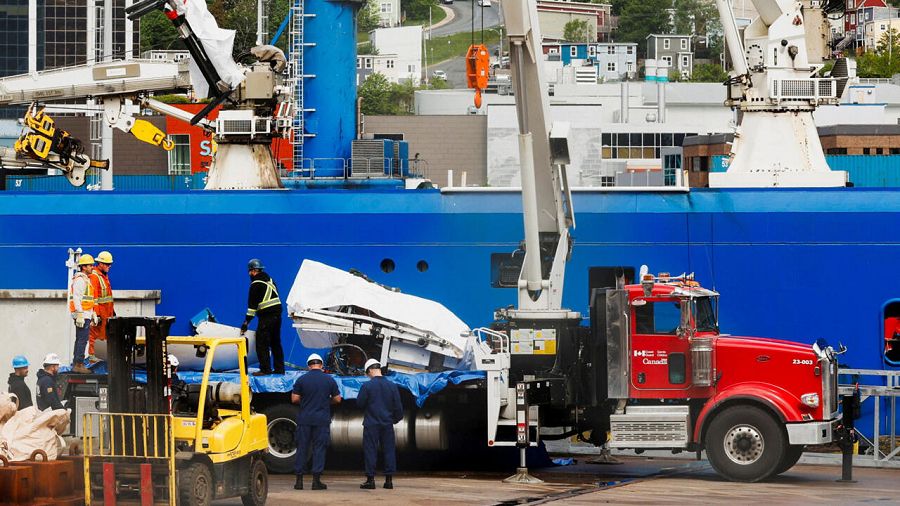
The wreck of the Titan submersible, which had tragically imploded during a Titanic wreck viewing expedition, continues to attract international interest. The US Coast Guard recently announced that it had recovered debris and evidence, including suspected human remains.
This crucial development is a major step forward in the investigation aimed at understanding the reasons for the tragedy and preventing such a disaster from happening again in the future.
The return of the wreckage of the Titan submersible to the port of St. John's, Newfoundland and Labrador marks a critical milestone in the ongoing investigation. The authorities are trying to determine the causes of the implosion which cost the lives of the five occupants of the submersible. The Canadian ship Horizon Arctic, which had participated in the search, transported the debris on board a remotely operated vehicle from the depths of the ocean to the coast.
Critical Evidence Recovered
In an official statement, Captain Jason Neubauer, Chief of the US Coast Guard, expresses his gratitude for the international support and inter-agency coordination that made it possible to recover this vital evidence under extreme conditions. The elements collected will provide essential information to the investigators of the international jurisdictions involved in the case. The need to understand the factors that led to this tragedy is paramount to avoiding similar incidents in the future.
An ongoing international investigation
The implosion of the submersible Titan, which occurred during its descent towards the wreck of the Titanic, resulted in the death of the five passengers and crew members. Canadian and American authorities are working closely together in this international investigation. The Transportation Safety Board of Canada (TSB) has already conducted preliminary interviews with those aboard the support vessel Polar Prince, which accompanied the Titan on its fatal dive.
Questions about the circumstances of the incident:
The company OceanGate, owner of the Titan, organized this eight-day expedition where clients paid $250,000 to visit the wreck of the Titanic. OceanGate CEO Stockton Rush piloted the submersible along with British billionaire Hamish Harding, French explorer Paul-Henry Nargeolet and Pakistani businessman Shahzada Dawood accompanied by his 19-year-old son, Suleman. Investigators are trying to understand the reasons for the implosion and the security measures taken during this expedition.
Manned submersibles are often used for scientific missions, site inspections and even tourist excursions, but this disappearance highlights the risks inherent in these explorations and raises questions about the safety measures put in place.
Features of the Titan submersible
The Titan is a submersible approximately 7 meters long, designed to take people to depths of up to 4,000 meters. It is propelled at a speed of approximately 3 knots, or 5.5 km/h. Unlike some submersibles that are tethered to a surface ship, the Titan appears to have operated independently on this expedition. According to information provided by the company OceanGate, owner of the submersible, the Titan is used for various activities such as site survey, data collection, film production and deep sea testing.
Communication and salvage challenges
The submersible would normally have been in acoustic communication with its surface vessel through a transponder and transceiver system. However, contact was lost, suggesting a possible blackout aboard the Titan. Although search operations were carried out with the help of aircraft, a submarine and sonar buoys, weather conditions complicated the rescue.
Several hypotheses are considered to explain the implosion of the Titan. In the best-case scenario, the submersible could have lost power but be equipped with a built-in safety system allowing it to rise to the surface. However, it's also possible that the ship ended up on the bottom of the ocean due to a more problematic failure. The most serious scenario would be a failure of its pressure housing, jeopardizing the integrity of the Titan's hull. Another possibility is an onboard fire, potentially caused by an electrical short, endangering crew and passengers.
While most research and work at sea is currently carried out using robotic and unmanned vehicles, manned expeditions carry additional risks to the safety of the individuals involved.
The disappearance of the Titan submersible raises questions about the safety of manned and commercial submarine expeditions. | 




